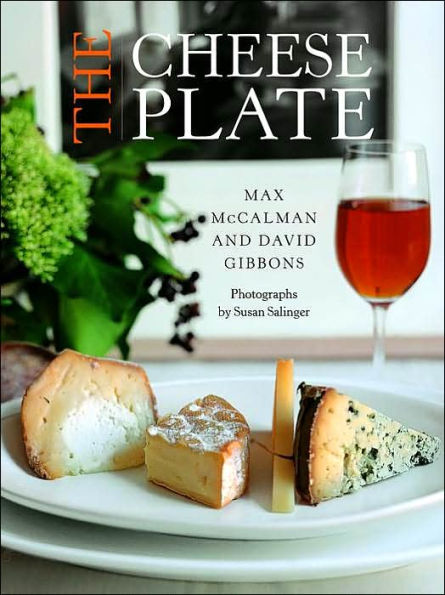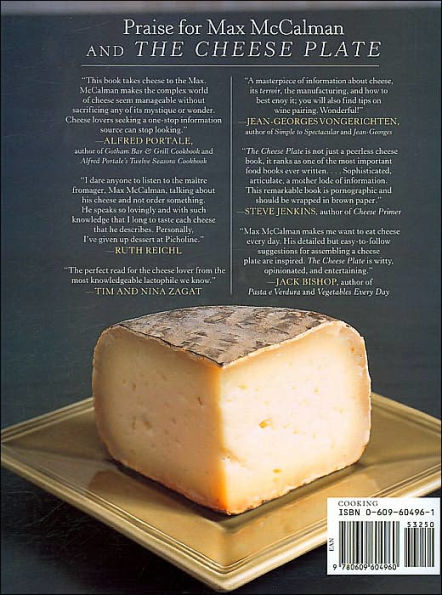Max McCalman is one of the world’s foremost experts on these matters. As the maître fromager (or “cheese master”) at the acclaimed restaurants Picholine and Artisanal in New York City, he spends his entire day, every day, dealing with cheese—ordering it, tasting it, studying it, serving it. And The Cheese Plate is the culmination of his years of passion and study for this subject: the definitive work on how to enjoy the world’s greatest cheeses (and what those cheeses are) at home.
The Cheese Plate begins with the fundamentals: history, what exactly cheese is, and how it’s made. Then Max moves onto the subject that has made him a star in the culinary world—the art of cheese tasting. To begin with, it’s important to know how to buy, store, and serve cheeses, and then how to taste them (again, as with wines, the best results come with a little finesse). Then you’ll want to pair cheeses with other foods and beverages, especially wines, to bring out the best of both. And with all this expertise in hand, you’ll want to construct cheese plates, from a quick lunch assortment to a full after-dinner tasting extravaganza. Finally, you’ll appreciate a rundown of the best cheeses in the world—where they’re from, what they look and taste like, their perfect wine accompaniments—so that you can become a maître fromager in your own right.
Max McCalman is one of the world’s foremost experts on these matters. As the maître fromager (or “cheese master”) at the acclaimed restaurants Picholine and Artisanal in New York City, he spends his entire day, every day, dealing with cheese—ordering it, tasting it, studying it, serving it. And The Cheese Plate is the culmination of his years of passion and study for this subject: the definitive work on how to enjoy the world’s greatest cheeses (and what those cheeses are) at home.
The Cheese Plate begins with the fundamentals: history, what exactly cheese is, and how it’s made. Then Max moves onto the subject that has made him a star in the culinary world—the art of cheese tasting. To begin with, it’s important to know how to buy, store, and serve cheeses, and then how to taste them (again, as with wines, the best results come with a little finesse). Then you’ll want to pair cheeses with other foods and beverages, especially wines, to bring out the best of both. And with all this expertise in hand, you’ll want to construct cheese plates, from a quick lunch assortment to a full after-dinner tasting extravaganza. Finally, you’ll appreciate a rundown of the best cheeses in the world—where they’re from, what they look and taste like, their perfect wine accompaniments—so that you can become a maître fromager in your own right.

Product Details
| ISBN-13: | 9780609604960 |
|---|---|
| Publisher: | Potter/Ten Speed/Harmony |
| Publication date: | 03/28/2002 |
| Pages: | 232 |
| Product dimensions: | 7.70(w) x 10.30(h) x 1.00(d) |




